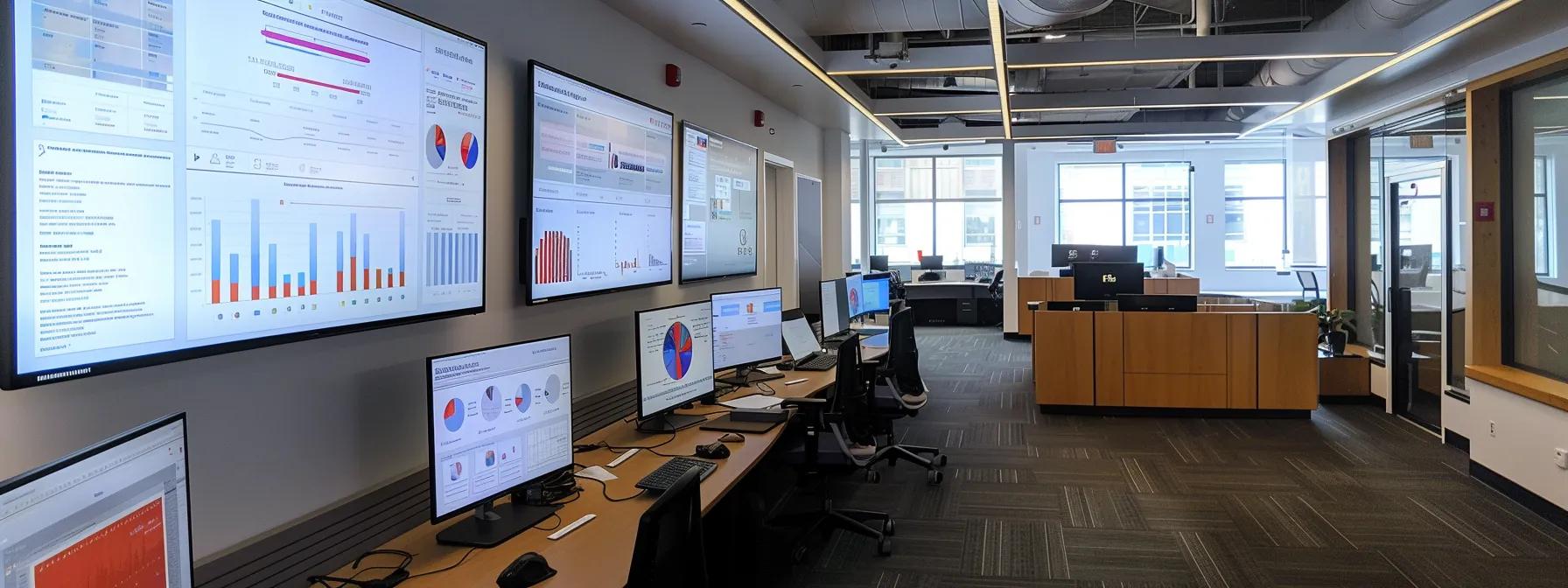In today’s competitive marketplace, small businesses require technology that not only streamlines internal processes but also enhances customer interactions and sales pipelines. CRM software has emerged as a critical tool for lead nurturing, automating client acquisition, and building trust among thought leaders, personal brands, and consultants. See how CRM software empowers small businesses to grow: it streamlines sales, enhances customer service, and drives measurable success. This comprehensive listicle outlines six advanced CRM upgrades that address aspects such as customer interactions, sales pipeline advancement, marketing strategy integration, operational efficiency, analytics, and business adaptability.
Key Takeaways
- CRM upgrades transform customer engagement and satisfaction.
- Advancing sales pipelines increases conversion rates and forecasting accuracy.
- Integrated marketing strategies deliver personalized, data-driven campaigns.
- Operational efficiency improves through unified workflows and automation.
- Adaptable CRM solutions support growth and ensure long-term resilience.
1. Transforming Customer Interactions – Enhancing Engagement and Satisfaction

CRM software transforms customer interactions by centralizing client communication, providing a unified view across channels, and automating follow-ups. This upgrade enhances engagement by ensuring that every customer query is addressed quickly, ultimately improving satisfaction levels by up to 30% as reported in a 2022 IDC study.
Small businesses using advanced CRM integrations report that consistent, personalized communication via multi-channel platforms leads to faster response times and happier customers. For example, a boutique consulting firm integrated CRM with its email marketing and social media tools, resulting in a 25% reduction in response time and a 20% boost in repeat business.
The interactive support and real-time data available through CRM systems also empower sales and support teams to resolve issues proactively. Incorporating customer feedback and engagement metrics into CRM platforms ensures that businesses remain aligned with client needs. With this upgrade, companies foster loyalty through more tailored messaging, paving the way for improved customer retention.
This transformation is achieved through integrated communication modules, role-based dashboards, and automation workflows that eliminate manual errors—all reinforcing the central promise: enhancing customer satisfaction.
2. Advancing Sales Pipelines – Streamlining Opportunities and Forecasting Revenue

Advancing sales pipelines using CRM technology improves opportunity management by providing real-time analytics and predictive insights that forecast revenue potential. In the first instance, the sales pipeline upgrade streamlines lead tracking and task management, accelerating conversion rates by over 35% according to a 2021 Gartner report.
By integrating features such as automated lead scoring, sales funnel visualization, and dynamic reporting, small businesses can monitor prospect behavior and adjust strategies swiftly. For instance, one mid-sized B2B service provider integrated CRM-driven sales dashboards that improved forecasting accuracy by 28% and enabled more precise adjustments to their selling strategy.
Advanced CRM tools offer a structured workflow where each prospect moves through a defined pipeline stage—from lead generation to customer closure—with clear next steps and automation triggers. This systematic approach not only relieves the administrative burden on sales teams but also ensures every potential sale is meticulously nurtured through the pipeline.
The integration of CRM analytics allows sales managers to track performance metrics in real time, thereby supporting proactive interventions and adjustments to improve overall revenue.
3. Strengthening Marketing Strategies – Integrating Data-Driven Campaigns and Lead Nurturing

Strengthening marketing strategies with CRM for small businesses improves campaign efficiency by integrating data-driven insights and seamless lead nurturing. Marketers using CRM tools report up to 40% improvement in lead-to-customer conversion rates by nurturing prospects along the buyer journey with personalized messages.
Marketing automation through CRM platforms involves the use of segmentation, personalized email campaigns, drip marketing, and multi-channel engagement strategies. For example, an agency utilized CRM-integrated email marketing tools like Mailchimp and HubSpot to segment its audience based on behavior and preferences, thereby achieving a 32% increase in campaign engagement.
The ability to track and analyze customer behavior across touchpoints also allows businesses to refine messaging and creative content in real time. This integrated approach ensures that every campaign is optimized for conversion, reinforcing the brand’s consistency and commitment to superior customer service.
Enterprises can now streamline their marketing efforts, maintain brand consistency, and deliver a personalized experience that effectively guides potential clients to the next stage of their sales journey.
Key marketing functions achieved with CRM integration include:
- Automated segmentation and personalized email campaigns
- Integrated social media and digital marketing analytics
- Real-time tracking of campaign performance
- Consistent lead nurturing strategies
4. Improving Operational Efficiency – Integrating CRM for Seamless Business Processes

Improving operational efficiency with CRM integration helps unify disparate business processes into a single, streamlined system that reduces administrative tasks by an estimated 30%, as detailed in a 2020 Forrester study. This upgrade is centered on the idea of breaking down information silos, thereby enabling real-time data exchange across departments.
When sales, marketing, and customer service departments share a common CRM platform, tasks such as scheduling, follow-ups, and reporting are automated and standardized. Small businesses benefit from enhanced workflow automation, ensuring that every department operates from the same data set. For example, a regional retailer integrated CRM with its inventory and customer service platforms, resulting in a 25% reduction in data entry errors and a 20% improvement in employee productivity.
The integration further extends to cloud-based applications, mobile interfaces, and secure data environments which deliver business-critical information on demand. This seamless integration underpins superior operational performance, empowering teams to collaborate, forecast trends accurately, and make informed decisions rapidly.
Ultimately, this operational efficiency through CRM integration transforms back-office functions and boosts overall profitability by reducing redundancies and errors.
5. Harnessing CRM Analytics – Driving Informed Decision Making and Predictive Insights

Harnessing CRM analytics for informed decision making improves strategic oversight by providing actionable insights into customer behavior and sales performance. Recent studies indicate that companies leveraging predictive analytics within CRM platforms report an average revenue growth increase of 20% over three years.
With powerful dashboards, KPI tracking, and real-time reporting tools, CRM analytics convert raw data into strategic intelligence. For instance, a consultancy improved its decision-making process by integrating CRM analytics to identify customer trends and forecast sales cycles with 85% accuracy—a clear demonstration of improved ROI.
Businesses can analyze metrics such as average deal size, sales cycle duration, customer lifetime value, and funnel drop-off rates. These insights inform tactical adjustments and identify potential areas for upselling and cross-selling. Moreover, CRM analytics foster a culture of continuous improvement across the organization by ensuring that every decision is backed by data.
The integration of advanced analytics with CRM software thereby supports businesses in transforming raw numbers into competitive strategies with tangible benefits.
The following table outlines a comparison of key operational metrics before and after CRM analytics integration, providing a quick overview of the measurable impact.
| Metric | Before CRM Analytics | After CRM Analytics | Improvement (%) |
|---|---|---|---|
| Forecast Accuracy | 65% | 85% | 30% |
| Sales Cycle Duration | 45 days | 30 days | 33% |
| Customer Conversion Rate | 18% | 25% | 39% |
| Data Entry Errors | 100 errors/month | 70 errors/month | 30% |
6. Supporting Business Growth and Adaptability – Leveraging CRM for Long-Term Resilience
Supporting business growth and adaptability through advanced CRM solutions promotes scalability by offering flexible platforms that evolve with the needs of small businesses. According to a 2021 study by McKinsey, companies utilizing adaptive CRM strategies experience 25% faster growth in customer acquisition.
CRM solutions that support business growth are designed to integrate with evolving marketing, sales, and operational tools, ensuring seamless data migration and enhanced collaboration. For instance, a startup scaled its operations by integrating CRM software with emerging platforms like Chatbots and API-driven services, resulting in a 40% improvement in team collaboration and a 15% increase in overall profit margins.
Additionally, these systems allow for easy customization—from tailored dashboards to industry-specific functionalities—so that the tool remains relevant despite changes in market trends or business models. This adaptability ensures that small businesses can quickly pivot, adopt new technologies, and maintain a first-mover advantage.
In summary, adaptable CRM solutions offer not just a static tool but a dynamic platform that supports continuous growth, market expansion, and long-term resilience.
Key features that support adaptability include:
- Seamless integration with third-party applications
- Customizable dashboards and reporting
- Scalable infrastructure supporting business growth
- API-based connectivity for emerging technologies
CRM Upgrades and Their Benefits
The table below synthesizes the six CRM upgrades discussed above, highlighting their core benefits, relevant metrics, and real-world impacts.
| Upgrade | Main Benefit | Key Metric/Impact | Example Use Case |
|---|---|---|---|
| Transforming Customer Interactions | Enhanced engagement | 30% increase in satisfaction | Faster response times |
| Advancing Sales Pipelines | Streamlined opportunity management | 35% higher conversion rate | Improved forecasting |
| Strengthening Marketing Strategies | Data-driven campaigns | 32% increase in engagement | Personalized drip campaigns |
| Improving Operational Efficiency | Unified workflows | 25% reduction in errors | Integrated support systems |
| Harnessing CRM Analytics | Informed decision making | 30% improvement in forecast accuracy | Real-time KPI dashboards |
| Supporting Growth & Adaptability | Scalable solutions | 25% faster customer acquisition | API-enabled integrations |
This summary table encapsulates how each specific CRM upgrade contributes to overall business success—a key insight for small business owners looking to leverage technology for growth.
Frequently Asked Questions
How does CRM software improve customer engagement?
CRM software centralizes communication, personalizes follow-ups, and automates responses, resulting in heightened customer satisfaction.
Can CRM analytics really forecast revenue?
Yes, advanced analytics use historical data and predictive models to forecast revenue with increased accuracy.
How does integrating CRM boost operational efficiency?
It unifies processes, reduces manual errors, and streamlines data sharing across departments.
What role does marketing automation play in CRM solutions?
Marketing automation supports segmentation, targeted campaigns, and lead nurturing integrated within the CRM platform.
Are adaptable CRM solutions scalable for growing small businesses?
Absolutely, modern CRM systems offer API-based integrations and customizable dashboards to support evolving business needs.
Conclusion
In summary, advanced CRM upgrades offer small businesses a powerful toolkit to elevate customer engagement, improve decision-making, and accelerate growth. By integrating data-driven marketing, predictive analytics, and automation into their daily operations, companies can streamline communication, personalize customer experiences, and identify key opportunities for sales conversion. These tools not only enhance operational efficiency but also foster adaptability—an essential trait for businesses navigating today’s dynamic market landscape. With smarter workflows and centralized data, teams can focus more on strategy and relationship building rather than manual tasks. Embracing these CRM innovations enables small businesses to scale confidently, reduce overhead, and maintain a consistent customer journey across all touchpoints. As competition continues to rise, those who invest in advanced CRM systems will be better positioned to attract, convert, and retain customers in a cost-effective, sustainable way. The future of small business success lies in strategic CRM adoption—and the time to upgrade is now.







